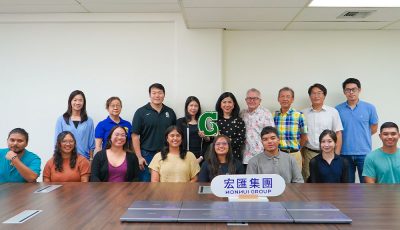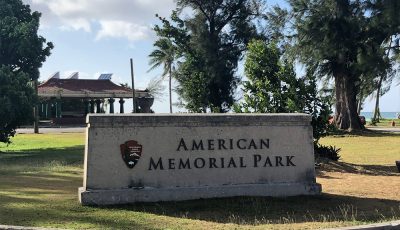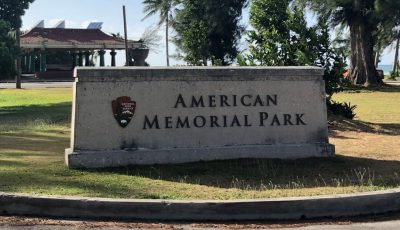Funds still being sought for AMP erosion study

Beach and shoreline erosion is gobbling up large tracts of Micro Beach, with the possibility that most of the area’s pavilions and cemented sidewalks will fall victim to this natural phenomenon. (Daisy Demapan)
Last year, the National Parks Service, which runs the American Memorial Park, requested for urgent funding for a modeling study for the Micro Beach area after noting the alarming rate of erosion over the past decade.
To date, sand is being swept from the coast to Smiling Cove with the cove’s western entrance now slowly being closed up by this sand pile.
Jim Richardson, superintendent for both the War in the Pacific National Historical Park in Guam and American Memorial Park, said the beach and shoreline erosion has already resulted in many trees falling and cemented sidewalks being destroyed. If the pattern continues, many of the Micro Beach pavilions would follow, he said.
It is anticipated that the American Memorial Park will lose half of its land in probably 30 to 50 years due to the constant erosion.
Another proposal for funding is being made by the National Park Service but Richardson said the study would not anticipate or model human mitigation to stop the erosion. Rather, it would model past human mitigation that was unsuccessful and is now part of what is causing the erosion.
“There are long histories of this kind of erosion but human mitigation almost never is a good answer,” Richardson said. “Nature is in charge and will continue doing what it does naturally. What we humans then can do is adapt our world to what nature is giving us.”
National Park Services manages the lands at Micro Beach with a technical agreement with the CNMI that essentially leases 177 acres of land to operate the park.



























